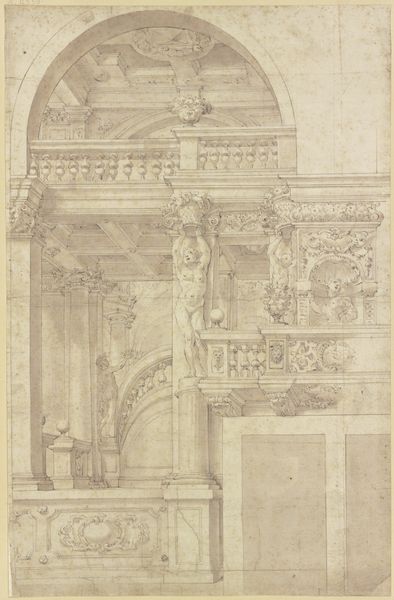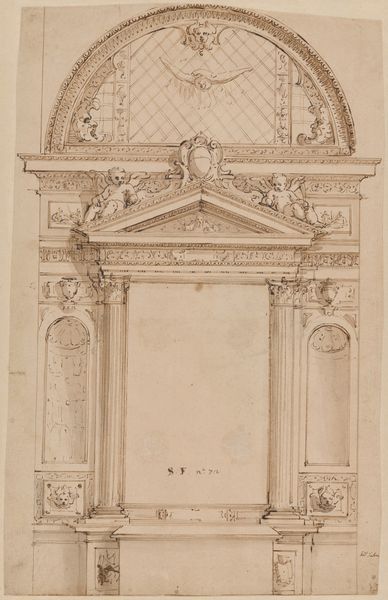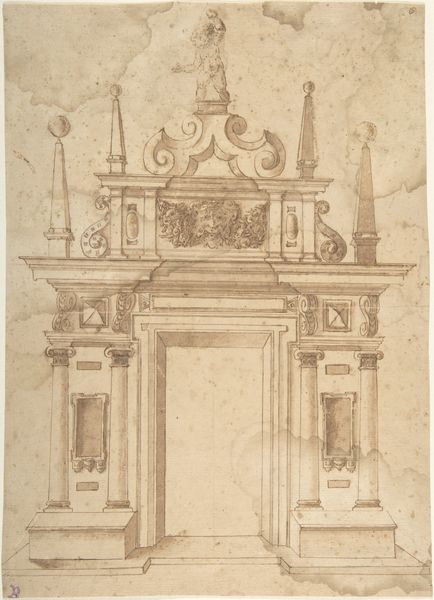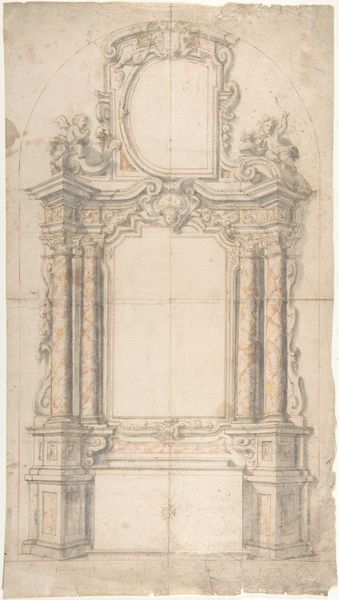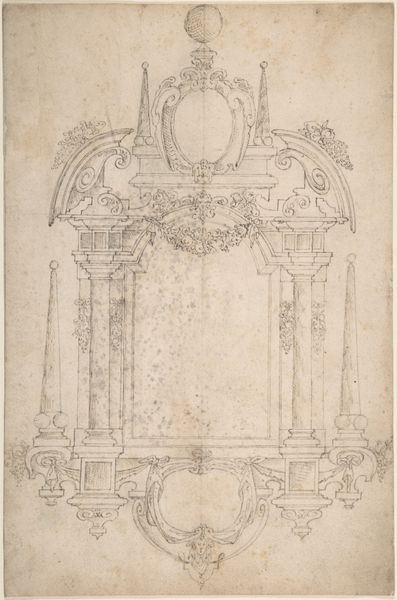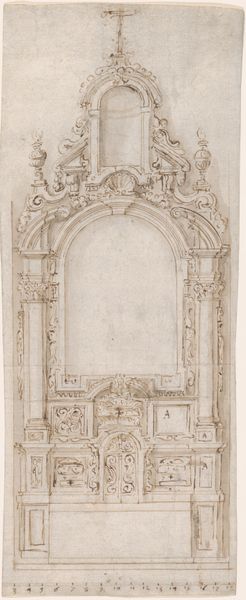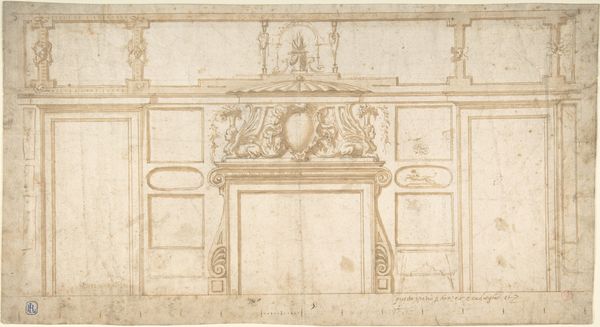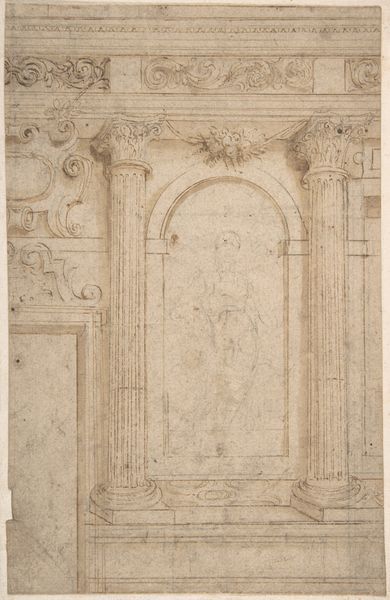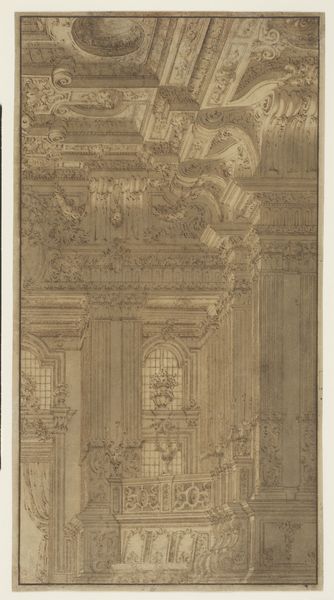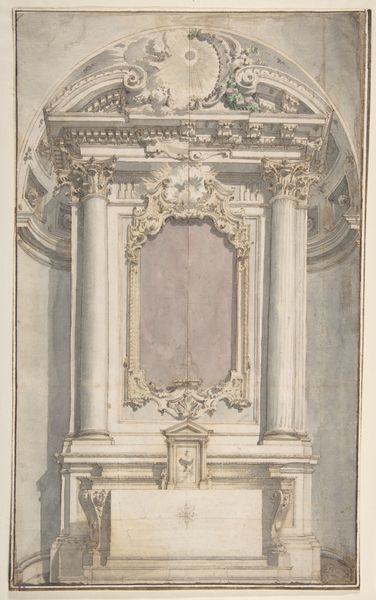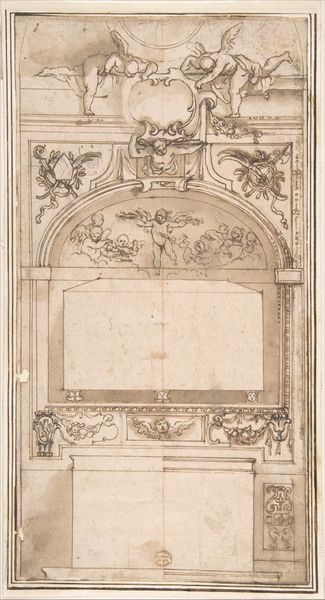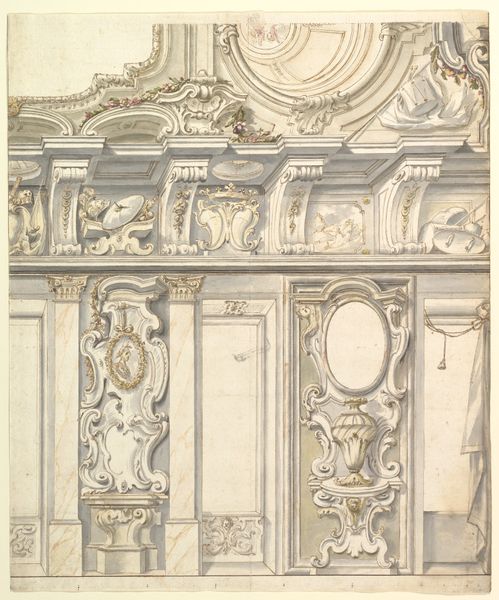
drawing, print, architecture
#
architectural sketch
#
drawing
#
natural stone pattern
#
aged paper
#
toned paper
# print
#
light earthy tone
#
etching
#
warm toned
#
arch
#
architectural drawing
#
warm-toned
#
watercolor
#
architecture
Dimensions: 17-3/4 x 13-1/2 in. (45.1 x 34.3 cm)
Copyright: Public Domain
Editor: This architectural sketch, "Project for a Church Facade," dates back to somewhere between 1600 and 1700. It’s currently housed at the Met. Looking at the faded, warm tones and the meticulous details, it feels quite formal and imposing. How do you interpret this work? Curator: It's interesting that you pick up on the formal nature. This design comes from a period rife with religious and political power struggles. Architectural projects, especially church facades, weren't just about aesthetics; they were powerful statements about institutional authority and theological beliefs. Consider the placement and ornamentation around the doorway - almost like a stage. What does that say about who is welcome, who holds the power to enter, and who dictates those terms? Editor: That's fascinating, I hadn’t considered it as a performance. I suppose the intricate details and imposing scale do suggest a sort of grand entrance. Do you think the intended church audience would reflect on power in this way, too? Curator: I think audiences across all social positions are always constructed, mediated and spoken for by monumental buildings such as this. I always ask my students to ask themselves: What social class and gender might this architectural work have represented and spoken to? Consider the period: How were ordinary people meant to interact with the Church, both physically and spiritually? Buildings like this weren't simply places of worship, but also tools used in a context of cultural influence. Editor: That's a really powerful way to frame it. It makes me see the sketch not just as a design, but as an instrument in a larger historical conversation about authority and inclusion. Thanks for that insight! Curator: My pleasure. It is important that we are not mere bystanders when we experience historical work, and instead participate in a dialogue that addresses past issues to enlighten present times.
Comments
No comments
Be the first to comment and join the conversation on the ultimate creative platform.
